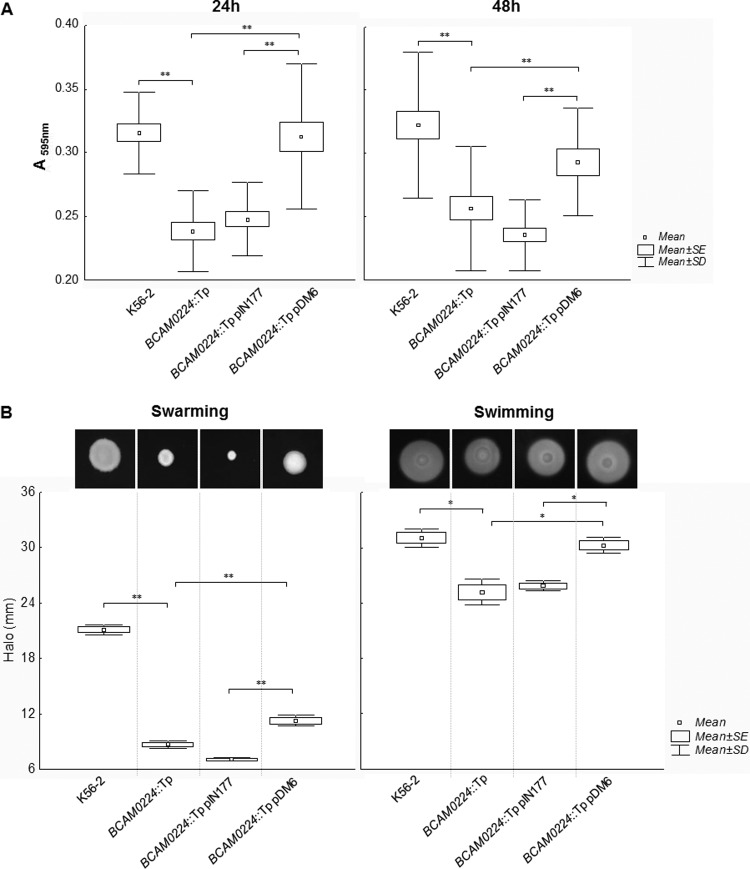FIG 3.
(A) Biofilm formation in polystyrene microtiter plates by wild-type B. cenocepacia K56-2 and the BCAM0224::Tp mutant at 24 and 48 h. Complementation of the mutant was achieved by using plasmid pIN177-BCAM0224 (pDM6) and the empty plasmid as a control. Biofilm growth was quantified by the solubilization of crystal violet-stained cells with ethanol. Under the experimental conditions used, the strains had similar growth rates. The BCAM0224::Tp mutant showed a decreased capacity to form biofilm compared to the wild-type strain (**, P < 0.01) by Tukey's multiple-comparison test for unequal group sample sizes. (B) Swarming and swimming motilities after 48 h of incubation of wild-type B. cenocepacia K56-2, the BCAM0224::Tp mutant, the BCAM0224::Tp mutant with empty vector pIN177, and the BCAM0224::Tp mutant complemented with pIN177-BCAM0224 (pDM6). The graph translates halo diameter measurements from three independent experiments. The mutant has motility that is significantly affected compared to that of the wild-type strain by Bonferroni's multiple test (**, P < 0.01 for swarming; *, P < 0.05 for swimming).

